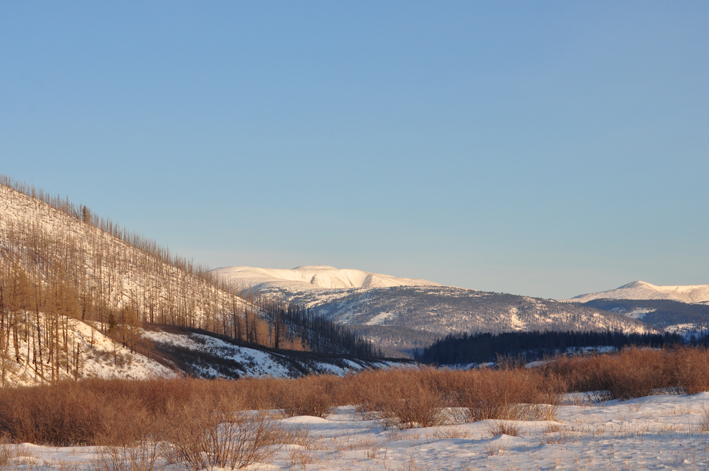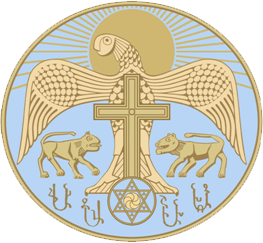|
Mongol Armenia
Mongol Armenia or Ilkhanid Armenia refers to the period in which both Armenia (during its union with the Kingdom of Georgia) and the Armenian Kingdom of Cilicia became tributary and vassal to the Mongol Empire (the later Ilkhanate) in the 1230s. Armenia and Cilicia remained under Mongol influence until around 1335. During the time period of the later Crusades (1250s to 1260s), there was a short-lived Armenian-Mongol alliance, engaged in some combined military operations against their common enemy, the Mamluks. They succeeded in the siege of Baghdad (1258), but suffered defeat eight years later. The Armenian calls for a wider Christian-Mongol alliance against Mamluk Islam, advocated notably by Hayton of Corycus, were ignored by the Latin powers in the Levant, leading to the demise of the European Crusader States and the imminent failure of the Crusades as a whole. Background Armenian background The Armenian Kingdom of Cilicia, or "Lesser Armenia" was formed in the late 12t ... [...More Info...] [...Related Items...] OR: [Wikipedia] [Google] [Baidu] |
Mongol Empire
The Mongol Empire of the 13th and 14th centuries was the largest contiguous land empire in history. Originating in present-day Mongolia in East Asia, the Mongol Empire at its height stretched from the Sea of Japan to parts of Eastern Europe, extending northward into parts of the Arctic; eastward and southward into parts of the Indian subcontinent, attempted invasions of Southeast Asia and conquered the Iranian Plateau; and westward as far as the Levant and the Carpathian Mountains. The Mongol Empire emerged from the unification of several nomadic tribes in the Mongol homeland under the leadership of Temüjin, known by the more famous title of Genghis Khan (–1227), whom a council proclaimed as the ruler of all Mongols in 1206. The empire grew rapidly under his rule and that of his descendants, who sent out invading armies in every direction. The vast transcontinental empire connected the East with the West, and the Pacific to the Mediterranean, in an enforced '' Pax M ... [...More Info...] [...Related Items...] OR: [Wikipedia] [Google] [Baidu] |
Genghis Khan
''Chinggis Khaan'' ͡ʃʰiŋɡɪs xaːŋbr /> Mongol script: ''Chinggis Qa(gh)an/ Chinggis Khagan'' , birth_name = Temüjin , successor = Tolui (as regent) Ögedei Khan , spouse = , issue = , house = Borjigin , dynasty = Genghisid , regnal name = Genghis Khan () , temple name = Taizu () , posthumous name = Emperor Fatian Qiyun Shengwu () , father = Yesügei , mother = Hoelun , religion = Tengrism , birth_date = , birth_place = Khentii Mountains, Khamag Mongol , death_date = (aged 64–65) , death_place = Xingqing, Western Xia , burial_place = Unknown(presumptively Ikh Khorig, Burkhan Khaldun, Khentii Province) Genghis Khan (born Temüjin; ; xng, Temüjin, script=Latn; ., name=Temujin – August 25, 1227) was the founder and first Great Khan ( Emperor) of the Mongol Empire, which became the largest contiguous empire in history after his death. He came to power by uniting many of the noma ... [...More Info...] [...Related Items...] OR: [Wikipedia] [Google] [Baidu] |
Karakorum
Karakorum ( Khalkha Mongolian: Хархорум, ''Kharkhorum''; Mongolian Script:, ''Qaraqorum''; ) was the capital of the Mongol Empire between 1235 and 1260 and of the Northern Yuan dynasty in the 14–15th centuries. Its ruins lie in the northwestern corner of the Övörkhangai Province of modern-day Mongolia, near today's town of Kharkhorin and adjacent to the Erdene Zuu Monastery, the probably earliest surviving Buddhist monastery in Mongolia. They are part of the upper part of the World Heritage Site Orkhon Valley. History Foundation of empires The Orkhon valley was a center of the Xiongnu, Göktürk, and Uyghur empires. To the Göktürks, the nearby Khangai Mountains had been the location of the Ötüken (the locus of power), and the Uyghur capital Karabalgasun was located close to where later Karakorum would be erected (downstream the Orkhon River 27 km north–west from Karakorum). This area is probably also one of the oldest farming areas in ... [...More Info...] [...Related Items...] OR: [Wikipedia] [Google] [Baidu] |
Kirakos Gandzaketsi
Kirakos Gandzaketsi (; c. 1200/1202–1271) was an Armenian historian of the 13th centuryS. Peter Cowe. Kirakos Ganjakec'i or Arewelc'i // Christian-Muslim Relations. A Bibliographical History / Edited by David Thomas & Alex Mallet. — BRILL, 2012. —vol. IV. — p. 438: "''Kirakos is one of the most important Armenian historians of the 13th century. He was born in the region of Ganja and received his early formation at the monastic school of Nor Getik under the eminent savant Vanakan Vardapet.''" and author of the ''History of Armenia'', a summary of events from the 4th to the 12th century and a detailed description of the events of his own days.Khanlaryan, L. «Կիրակոս Գանձակեցի»'. Soviet Armenian Encyclopedia. vol. v. Yerevan, Armenian SSR: Armenian Academy of Sciences, 1979, p. 450. The work concentrates primarily on the history of Medieval Armenia and events occurring in the Caucasus and Near East. The work serves as a primary source for the study of th ... [...More Info...] [...Related Items...] OR: [Wikipedia] [Google] [Baidu] |
Hasan Jalal
The House of Hasan-Jalalyan ( hy, Հասան-Ջալալյաններ) was an Armenian dynasty that ruled the region of Khachen (Greater Artsakh) from 1214 onwards in what are now the regions of lower Karabakh, Nagorno-Karabakh and small part of Syunik. Ulubabian, Bagrat. ''"Հասան-Ջալալյաններ"'' asan-Jalalyans Armenian Soviet Encyclopedia. Yerevan: Armenian Academy of Sciences, 1980, vol. 6, p. 246. It was named after Hasan-Jalal Dawla (Հասան-Ջալալ Դոլա), an Armenian feudal prince from Khachen. The Hasan-Jalalyan family was able to maintain its autonomy throughout several centuries of foreign domination of the region by Seljuk Turks, Persians and Mongols. They, as well as the other Armenian princes and '' meliks'' of Khachen, saw themselves as holding the last bastion of Armenian independence in the region. Through their patronage of many churches and other monuments, the Hasan-Jalalyans helped cultivate Armenian culture throughout the region. B ... [...More Info...] [...Related Items...] OR: [Wikipedia] [Google] [Baidu] |
Kingdom Of Armenia (Middle Ages)
The Bagratid Kingdom of Armenia, also known as Bagratid Armenia ( xcl, Բագրատունեաց Հայաստան, or , , 'kingdom of the Bagratunis'), was an independent Armenian state established by Ashot I Bagratuni of the Bagratuni dynasty in the early 880s following nearly two centuries of foreign domination of Greater Armenia under Arab Umayyad and Abbasid rule. With each of the two contemporary powers in the region—the Abbasids and Byzantine Empire, Byzantines—too preoccupied to concentrate their forces in subjugating the region, and with the dissipation of several of the Armenian ''nakharar'' noble families, Ashot succeeded in asserting himself as the leading figure of a movement to dislodge the Arabs from Armenia. Ashot's prestige rose as both Byzantine and Arab leaders—eager to maintain a buffer state near their frontiers—courted him. The Abbasid Caliphate recognized Ashot as "prince of princes" in 862 and, later on, as king (in 884 or 885). The establishment ... [...More Info...] [...Related Items...] OR: [Wikipedia] [Google] [Baidu] |
Caucasus
The Caucasus () or Caucasia (), is a region between the Black Sea and the Caspian Sea, mainly comprising Armenia, Azerbaijan, Georgia (country), Georgia, and parts of Southern Russia. The Caucasus Mountains, including the Greater Caucasus range, have historically been considered as a natural barrier between Eastern Europe and Western Asia. Mount Elbrus in Russia, Europe's highest mountain, is situated in the Western Caucasus. On the southern side, the Lesser Caucasus includes the Javakheti Plateau and the Armenian highlands, part of which is in Turkey. The Caucasus is divided into the North Caucasus and South Caucasus, although the Western Caucasus also exists as a distinct geographic space within the North Caucasus. The Greater Caucasus mountain range in the north is mostly shared by Russia and Georgia as well as the northernmost parts of Azerbaijan. The Lesser Caucasus mountain range in the south is occupied by several independent states, mostly by Armenia, Azerbaijan, and Ge ... [...More Info...] [...Related Items...] OR: [Wikipedia] [Google] [Baidu] |
Rusudan Of Georgia
Rusudan ( ka, რუსუდანი, tr) (c. 1194–1245), a member of the Bagrationi dynasty, ruled as Queen of Georgia in 1223–1245. Life Daughter of King Tamar of Georgia by David Soslan, she succeeded her brother George IV on January 18, 1223. George’s untimely death marked the beginning of the end of the Georgian Golden Age. Rusudan was unable to preserve whatever was gained by her mother and brother. She was known as a beautiful woman devoted to pleasure, whose hand was sought by her Muslim neighbors. In Muslim sources, such as Ata-Malik Juvayni, Rusudan was known as Qiz-Malik, from the Turkish ''qiz'', "maiden", and the Arabic ''malik'', "king". Minorsky, Vladimir, "Tiflis", in: M. Th. Houtsma, E. van Donzel (1993), ''E. J. Brill's First Encyclopaedia of Islam, 1913-1936'', p. 756. Brill, In the autumn of 1225, Georgia was attacked by the Khwarazmshah Jalal ad-Din Mingburnu, pursued by the Mongols. The Georgians suffered bitter defeat at the Battle of Garni, ... [...More Info...] [...Related Items...] OR: [Wikipedia] [Google] [Baidu] |
Georgia (country)
Georgia (, ; ) is a transcontinental country at the intersection of Eastern Europe and Western Asia. It is part of the Caucasus region, bounded by the Black Sea to the west, by Russia to the north and northeast, by Turkey to the southwest, by Armenia to the south, and by Azerbaijan to the southeast. The country covers an area of , and has a population of 3.7 million people. Tbilisi is its capital as well as its largest city, home to roughly a third of the Georgian population. During the classical era, several independent kingdoms became established in what is now Georgia, such as Colchis and Iberia. In the early 4th century, ethnic Georgians officially adopted Christianity, which contributed to the spiritual and political unification of the early Georgian states. In the Middle Ages, the unified Kingdom of Georgia emerged and reached its Golden Age during the reign of King David IV and Queen Tamar in the 12th and early 13th centuries. Thereafter, the ... [...More Info...] [...Related Items...] OR: [Wikipedia] [Google] [Baidu] |
Holy Land
The Holy Land; Arabic: or is an area roughly located between the Mediterranean Sea and the Eastern Bank of the Jordan River, traditionally synonymous both with the biblical Land of Israel and with the region of Palestine. The term "Holy Land" usually refers to a territory roughly corresponding to the modern State of Israel and the modern State of Palestine. Jews, Christians, and Muslims regard it as holy. Part of the significance of the land stems from the religious significance of Jerusalem (the holiest city to Judaism, and the location of the First and Second Temples), as the historical region of Jesus' ministry, and as the site of the first Qibla of Islam, as well as the site of the Isra and Mi'raj event of 621 CE in Islam. The holiness of the land as a destination of Christian pilgrimage contributed to launching the Crusades, as European Christians sought to win back the Holy Land from Muslims, who had conquered it from the Christian Eastern Roman Empir ... [...More Info...] [...Related Items...] OR: [Wikipedia] [Google] [Baidu] |






